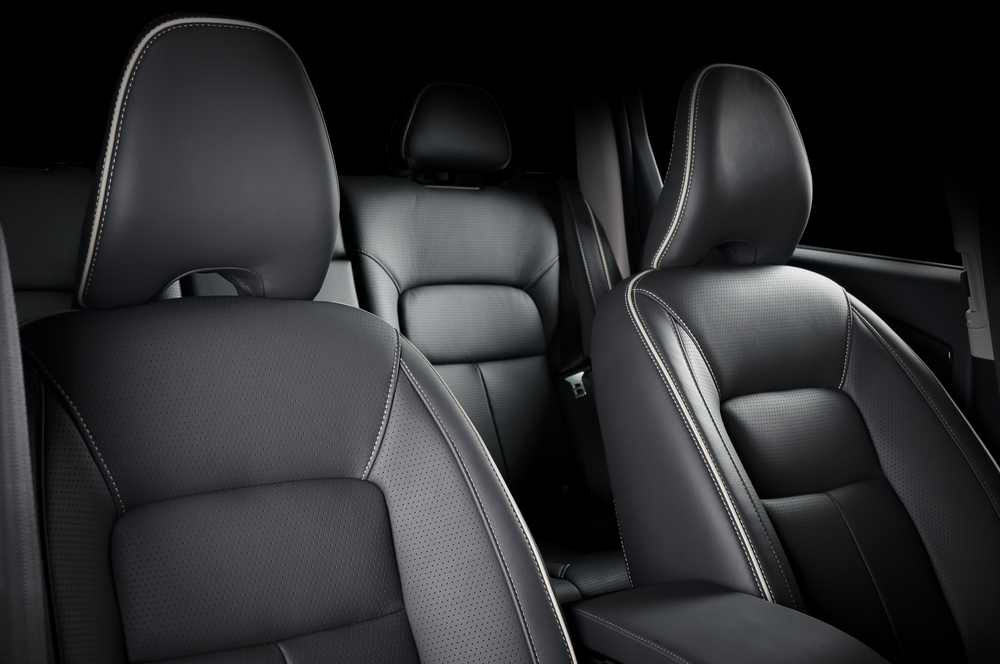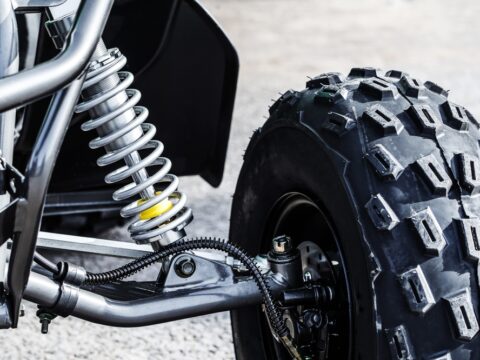When it comes to Faux vs Real Leather Car Seats, making an informed choice is crucial for comfort and longevity. In this comprehensive guide, we will delve deep into the world of faux and real leather car seats to help you make a well-informed decision.
Faux leather, sometimes called imitation or vegan leather, has become more prevalent lately due to its affordability and ethical considerations. But how does it compare with genuine leather? We’ll explore each material and their key differences.

Contents
What Is Faux Leather Made Of?
Faux leather, or synthetic leather, has become a popular choice for car seats in recent years. It offers the look and feel of genuine leather without the ethical concerns associated with animal-derived materials.
Cars With Faux Leather Seats
- Toyota Corolla: The higher trims offer SofTex-trimmed seats, which provide an eco-friendly alternative to traditional full-grain leathers.
- Volkswagen Arteon: This luxury sedan features V-Tex Leatherette seating surfaces that give drivers a premium experience without using genuine cowhide.
- Tesla Model Y: Tesla’s all-electric crossover SUV comes standard with vegan “leather” upholstery made from synthetic materials instead of animal hides.
In addition to these examples, many other automakers have started offering faux leather options for their vehicles, catering to the growing demand for cruelty-free and environmentally friendly alternatives.
What Is Real Leather?
Real leather, also known as genuine leather, is a natural material made from the hide of animals, typically cows. Genuine leather has been employed for years in various contexts, including apparel, shoes, and furniture upholstery due to its strength and luxurious feel. In the automotive industry, real leather car seats are considered a premium option that adds value and comfort to your vehicle.
Examples of Cars With Real Leather Seats
Examples of cars with real leather seats include luxury brands like BMW 3 Series, Mercedes-Benz E-Class, and Audi A6. However, many mainstream vehicles also offer genuine leather seating options such as the Honda Civic Si Sedan or the Toyota Camry.
Main Differences
When choosing car seats, it’s essential to understand the main differences between faux leather and real leather. These materials have distinct characteristics that affect their durability, composition, aesthetics, breathability, and maintenance cost.
Faux Leather vs Real Leather Durability
Faux leather is generally less durable than genuine leather. It tends to crack or peel over time due to its synthetic nature. On the other hand, real leathers are more resistant to wear and tear, making them a better choice for long-term use.
Composition
Faux leather is made from synthetic materials like polyurethane (PU) or vinyl (PVC), while genuine leathers come from animal hides, such as cowhide or pigskin. This difference in composition affects not only their appearance but also their overall performance in terms of comfort and longevity.
Aesthetics
The visual appeal of both materials can be subjective; however, genuine leathers often have a richer texture and develop a unique patina over time. Faux leathers may imitate this look but lack the depth and natural variations found in authentic hide-based products.
Breathability
Genuine leathers offer superior breathability compared to faux alternatives, which tend to retain heat more easily. The porous nature of real leather allows for better air circulation, providing a more comfortable experience during long drives or hot weather conditions. Learn more about the breathability of different seat materials here.
Maintenance Cost
When it comes to maintenance costs, faux leathers have an advantage over genuine ones. Faux leathers are simpler to tidy up and less vulnerable to discoloration, making them a low-upkeep alternative for automobile proprietors. However, as mentioned earlier, their lower durability may result in higher replacement costs in the long run compared to investing in high-quality genuine leather seats.

Pros and Cons
Before deciding on faux leather or real leather car seats, consider the advantages and disadvantages of each. Weighing the advantages and disadvantages of each material is important to make a wise choice that fits your requirements, tastes, and finances.
Pros of Faux Leather Car Seats
- Affordability: Faux leather is generally less expensive than genuine leather, making it a more budget-friendly option for those looking to upgrade their car interiors.
- Eco-friendliness: As a synthetic material, faux leather has a smaller environmental impact compared to genuine leather production. Additionally, some manufacturers use recycled materials in their faux leathers.
- Maintenance: Faux leather is easier to clean than genuine leather since it doesn’t absorb spills or stains as easily. A simple wipe with a damp cloth can keep the seats looking fresh.
- Variety: There are many different colors and patterns available in faux leathers which provide more customization options for your vehicle interior.
Cons of Faux Leather Car Seats
- Durability: While modern faux leathers have improved significantly in terms of durability, they still tend not to last as long as high-quality genuine leathers.
- Breathability: Faux leather doesn’t breathe as well as genuine leather, which can lead to discomfort during hot weather or long drives.
- Aesthetics: Although faux leathers have come a long way in mimicking the look of real leather, they may not provide the same luxurious feel and appearance that genuine leather offers.
Pros of Real Leather Car Seats
- Durability: Genuine leather is known for its longevity and ability to age gracefully with proper care. The result is an excellent investment for those who want to keep the vehicle for an extended period.
- Breathability: Real leather provides better breathability than synthetic materials, ensuring greater comfort during warm weather or lengthy trips.
- Prestige: Genuine leather in car interiors is often associated with luxury and high-end vehicles, adding a touch of class to your ride.
Cons of Real Leather Car Seats
- Maintenance: Genuine leather requires more care and attention to maintain its appearance and durability. This includes regular cleaning, conditioning, and protection from direct sunlight.
In conclusion, the decision should be based on individual preferences and budget.
Which Is Better?
The decision between faux leather and genuine leather car seats ultimately depends on your personal preferences, budget, and priorities. Both materials have their own unique benefits and drawbacks that you should consider when making a decision.
Faux Leather: Budget-Friendly & Eco-Conscious Choice
If you’re looking for a more affordable option that’s also eco-friendly, faux leather may be the way to go. Faux leathers are usually crafted from artificial substances such as PU or PVC, providing a cost-effective alternative that can imitate the appearance of genuine leather. Additionally, since no animals are harmed in its production process, it is considered an ethical choice for those concerned about animal welfare.
Genuine Leather: Luxurious & Timeless Appeal
On the other hand, if you value luxury and tradition over cost savings and environmental concerns, genuine leather car seats might be more suitable for you. Real leathers age gracefully while offering unmatched comfort due to their natural breathability. They often come standard in high-end vehicles as they add a touch of sophistication to any car interior.
To make an informed decision, consider test-driving vehicles with both types of upholstery or visiting local showrooms to see which material feels best for you. Additionally, researching online reviews can provide valuable insights into how well each type of seat holds up over time.














